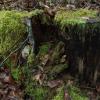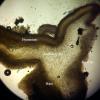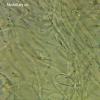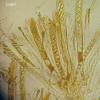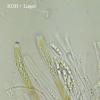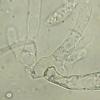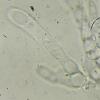
19-11-2025 23:21
 carl van den broeck
carl van den broeck
Dear guestIn Waardamme, Belgium, I found dozens of

19-11-2025 20:51
 Andreas Millinger
Andreas Millinger
Good evening,found this species on a felled trunk

19-11-2025 13:04
 Bruno Coué
Bruno Coué
Bonjour,je sollicite votre avis pour la récote

17-11-2025 21:46
Philippe PELLICIERBonjour,Récolté sur bois pourrissant de feuillu

16-11-2025 21:09
 Robin Isaksson
Robin Isaksson
Anyone recognize this acc. to pictures.? Found on

18-11-2025 13:59
Nogueira HéctorNovember 14, 2025 Brazuelo (León) SPAIN Hymenosc

17-11-2025 19:14
herman lambertApothécie discoïde 0.6 cm diam., orangeFace hym�

17-11-2025 21:57
Philippe PELLICIERBonjour,Récolté sur bois de feuillu mort dur, no

14-11-2025 16:26
 Marian Jagers
Marian Jagers
Hello everyone, On dead wood of Cytisus scoparius
Today I found a few fruiting bodies on the trunk of a pine cut a few years ago.
My collection is only similar to the one shown on the Zotto (Eigenried) disc. The spores, however, are longer than those presented there, so I decided to discuss the collections.
- croziers +
- no crystals
- no outer gel layer
- on the ectal excipulum, external cells elongated
- spores:
(13.2) 15.1 - 19 (19.8) × (4.2) 4.5 - 5.2 (5.4) µm
Q = (2.8) 2.9 - 4.2 (4.3); N = 17
Me = 17.2 × 4.8 µm; Qe = 3.6
18.75 4.47
18.99 5.41
16.18 4.23
19.84 4.71
17.46 4.62
13.22 4.65
13.63 4.84
17.01 4.72
15.51 4.96
18.49 5.04
17.77 4.65
17.74 5.17
16.62 4.77
18.37 4.31
19.19 4.97
15.07 5.20
18.90 4.99
greetings
Mirek

Ascomata maximum 2.5-3 mm.
Probably you are right. I have never thoroughly microscoped Ascocoryne sarcoides.
Only a few times I looked at Ascocoryne cilichnium under the microscope and maybe that is why I did not associate this collection with Ascocoryne because it has different spores.
greetings
Mirek

Apos was small but mature, paraphyses not capitate.
Thanks for the suggestions but I think it's A. sarcoides.
I will try to download more collections and compare their features.
Mirek

